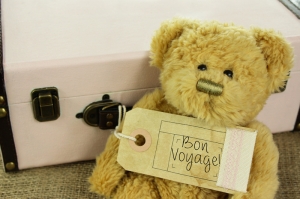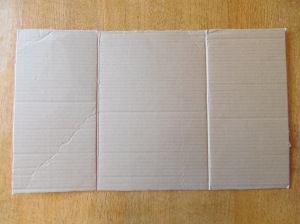I fixed a cheery grin on my face as the coach pulled away and my daughter’s face became a distant blur behind tinted glass in the early morning half-light. We’d touched palms through the glass just seconds before, but by the time the coach disappeared around the first bend the condensation from my hand print on the window had already vanished.
Taking my daughter with it.
My precious seven-year-old angel.
Still very much my little girl.
I’m not a clingy parent. I encourage my kids to be independent. But this was a first. My daughter was off on a school trip for 6 long days, and 5 dark nights. Staying on a boat. Her longest time ever away from home. In fact, before this she’d only ever before spent the odd single night at a sleepover just minutes down the road. And even then she had cried for Mummy in the early hours. My heart clenched at the memory.
I knew she was nervous. Apprehensive. Scared.
So was I.
I brushed the tears from my eyes and got busy strapping little brother into his car seat, determined to put on a brave face. Why? I guess so as not to upset him. But my sensitive little lad had no such inhibition and burst into tears, sobbing uncontrollably. His concept of time is still limited, but he knew Ella was gone. For a while at least.
And maybe I wasn’t containing my own emotions as well as I’d imagined. He was picking up on my distress too.
I held him and loved him through it. Loved us both through that immediate sense of loss that filled the space where she had been only minutes before.
The house felt empty. All of us were a little lost. I began to find significance in the mundane, lingering over the cup she’d drunk from that morning, the spills of milk around the cereal bowl she had left. I made her bed. Scooped up her PJs from where she had cast them, as usual, in a heap on the floor. No hint of irritation in my mind.
I paused.
If I can be so calm today, why do I let the little things make me grouchy when she’s around?
Her absence made life more simple, of course. No sibling spats to referee. Only one child to guide through the daily round of dressing, washing, teeth cleaning, eating, bathing … But really, what is going on in those moments where I lose the plot over a pair of knickers on the floor? Is my life that shallow?!
No, it’s not. It’s completely normal.
But that first, tough day that my little girl was away was like a wake up call to all the little things I miss because life gets in the way. If she was never again here to leave clothes on the floor again I’d miss it. My heart would ache for it. For her. As it did that morning.
I resolved to take a step back and take a sense check when I feel myself getting irritated over the small stuff.
It has already made me more patient. I’m aware that I actively appreciate both kids more.
Just for who they are.
Just because they are there.
Because one day soon they will no longer be here. And that is right. It’s the natural order of things. And I need to be ready for the day when all that remains in their rooms are the echoes of spirited play, and the faint shadows of clothes once discarded without a care.
Letting go has to be one of the most challenging things a parent can face. That first morning at nursery. The start of school. The first sleep over. The first school trip away … these are the appetizers for the inevitable bitter-sweet dessert of their ultimate, permanent departure from home.
As the week progressed I became more at peace, and little brother started to enjoy his new-found prominence as Big Kid on the block. He even got to be boss of the TV remotes. The school posted short daily updates online, and a group photo. Until those images appeared I never realised what the potent mix of emotions that can be stimulated by a single, static image:
- She looked tired. Or was she just squinting in the bright sun??
- Wasn’t she wearing that T-shirt yesterday too? Are they not encouraging cleanliness? Have they even showered??
- She was standing to one side. Had she fallen out with her friends? Was she feeling abandoned and lonely??
- I’m sure she looks thinner. What are they feeding her? Is it enough? Does she even like it? What if she’s living on bread??
And so it went on. My mind in overdrive. I just wanted to hug her. How could anyone else possibly take as good care of her as we do at home??
Sheesh. Get over yourself Mum!
It’s natural to worry. But when she arrived home it confirmed all that I already knew in my heart – at a base level she was absolutely fine. All basic needs had been catered for. The rest had been left largely up to them.
And she had survived.
No …
She had thrived.
Proud doesn’t even come close.
The week took its toll on my girl, that much is certain. She had bottled up a lot of emotion during the week in order to get through the homesickness. Although securely nailed-in for the week these emotions have surfaced since she returned home. It’s like she’s been learning to feel again.
And me too.
Relief flooded through me when she stepped off the train into my arms at the end of her adventure. I cried that night, finally able to lay to rest all the fears I had been carrying all week, not daring to voice or even acknowledge them. I was going to write this post while she was away, but found I couldn’t. The emotions were too close to the surface. I was in danger of losing myself in them completely.
But you know, we were both okay, me and my girl.
I was able to hold it together because I’ve had practice over the years at simply having to cope sometimes. What my daughter learned as much as anything in her week away was that she, too, can survive out of comfort zone. And she is the stronger for it.
I learned to let go of her during that week.
And she me.
Just a bit anyway.
The clothes are back on the floor. They still make me grouchy, but I pick them up with better humour now. And I’m one step closer to being ready for the day when I’m scooping up shadows.
















